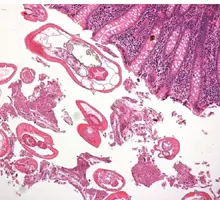
Salivary Gland Cancer: Emerging Insights and the Unexpected Roles of Vibegron and Netupitant
— Fighting Cancer Together —
What is salivary gland cancer?
Salivary gland cancer starts in one of the salivary glands. It’s not just a single disease. There are actually several different salivary glands found inside and near your mouth. Many types of cancer and benign (non-cancerous) tumors can develop in these glands.
Types of Salivary Gland Cancer
- Mucoepidermoid Carcinoma
- Acinic Cell Carcinoma
- Adenocarcinoma, not otherwise specified (NOS)
- Adenoid Cystic Carcinoma
- Polymorphous adenocarcinoma
- Pleomorphic Adenoma

Together, we can beat cancer
We’ve done it before

What is Salivary Gland Cancer?
Salivary gland cancer is a rare malignancy that arises in the tissues of the salivary glands, which are responsible for producing saliva. These glands are located in and around the mouth and throat. Tumors may develop in the parotid, sublingual, or submandibular glands, and they often present as painless swelling, facial numbness, or difficulty swallowing.
Although salivary gland cancers account for less than 5% of head and neck tumors, their complex histology and diverse subtypes make diagnosis and treatment especially challenging.


Diagnosis and Treatment Challenges
Early diagnosis typically involves MRI or CT imaging, followed by a fine-needle aspiration biopsy. Treatment often requires surgical removal of the tumor, and depending on the cancer grade and stage, radiotherapy or chemotherapy may follow.
In some cases, supportive care during treatment—especially in chemotherapy patients—requires medications that can minimize side effects like nausea, dry mouth (xerostomia), and bladder issues. This is where agents like netupitant and vibegron may play interesting roles.

Netupitant: Managing Chemotherapy-Induced Nausea in Salivary Gland Cancer
Netupitant is an NK1 receptor antagonist widely used in combination with palonosetron to prevent chemotherapy-induced nausea and vomiting (CINV). For patients with salivary gland cancer undergoing cytotoxic treatment regimens, maintaining quality of life is critical.
- Why It Matters: Effective CINV control improves treatment adherence, nutritional status, and overall well-being.
- Clinical Insight: While not directly targeting the tumor, netupitant supports comprehensive cancer care by mitigating one of the most debilitating side effects of oncology drugs.


🩺 Symptoms to Watch For
- Painless lump or swelling near the ear, jaw, or inside the mouth
- Facial nerve weakness or paralysis
- Difficulty swallowing or opening the mouth
- Persistent pain in the mouth or neck
- Numbness or tingling in the face

Treatment Options
- Surgery – Primary treatment; may include partial or total gland removal
- Radiation therapy – Often used after surgery for high-grade or advanced tumors
- Chemotherapy – Used in metastatic or unresectable cases, though efficacy is limited
- Targeted therapy & immunotherapy – Under investigation; trials are ongoing

Why Supportive Care Matters
Salivary gland cancer treatment can impact quality of life, especially with issues related to:
- Dry mouth (xerostomia)
- Difficulty eating/speaking
- Nausea and fatigue from chemo
- Bladder dysfunction from prolonged hospitalization or medications
That’s where supportive medicines like:
- Netupitant (anti-nausea) and
- Vibegron (bladder symptom relief)
can significantly improve daily function during treatment.

Prospects for the Future: Innovations & Research
- Tumor genomic profiling to customize therapy (precision oncology)
- Proton therapy for localized radiation that causes less tissue damage
- Using artificial intelligence (AI) to enhance imaging for early detection
- Novel immunotherapies and biomarker-targeted medications are being investigated in clinical trials.

Why This Matters
Salivary gland cancer may be rare, but its effects are often life-altering. A multi-disciplinary approach combining surgery, radiation, and supportive care using drugs like vibegron and netupitant ensures not just survival—but better quality of life for patients.
Join us in the fight against cancer and help us improve survival rates.
Join us and make a difference in the fight against cancer des glandes salivaires.
